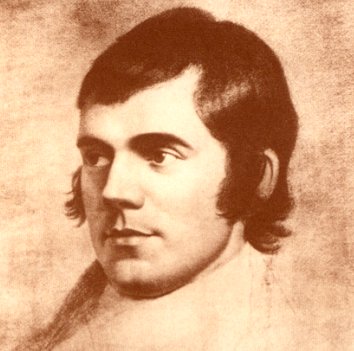ROBERT BURNS (1759-1796)

Burns was and is a beloved figure. | The 1996 stamps. | The New Year's Anthem
BUT HE WASN'T JUST CUTE!
"To a Mouse"
[p. 171]
Some [Radical, Revolutionary] Romantic Characteristics:
- "On Turning Her up in Her Nest with the Plough, November, 1785" It's personal, and that often (in Wordsworth & Coleridge too) means that it's occasional.
| [The French revolution happens in 1789, but I'm sticking to it as a starting date for Romanticism] |
- The voice of the common man; it's the voice of a Scottish farmer, than which there can be no man more common.(Thus, the Haggis.)
- The dialect was a choice Burns made. He could write standard English perfectly well; see the second stanza.
- The widening of the circle of sympathy. | "Liberty, Equality, Fraternity." | See Wikipedia on the SPCA.
- Romantic loneliness; see the end of the poem.
-- A visual note on line 15, "A daimen-icker in a thrave": A sheaf of corn | ears of corn
-- Audio of "To a Mouse"
"Song: For a' that and a' that"
[p. 181]
- The voice of the common man again. It is actually is a "song," a folk song to which Burns set his lyrics.
- Paraphrase of the first three lines:
If there is someone that because of honest Poverty . . . hangs his head, and all that, he's a coward-slave and we disdain him.
- The significance of "a' that"
-- see below:
And this:
- The prophetic note. | See the last stanza. | Blake considered himself a prophet. Shelley, in "Mont Blanc," also strikes this note.
--Link to the lyrics and melody. | Link to YOU TUBE performance.
